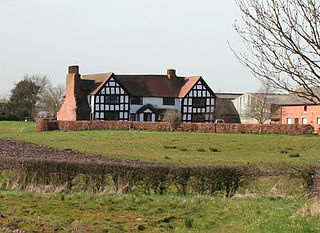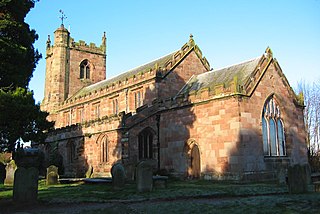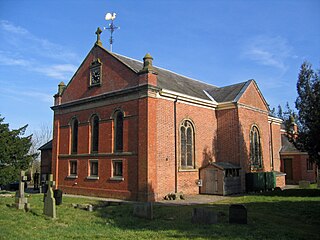
Haarlem is a city and municipality in the Netherlands. It is the capital of the province of North Holland. Haarlem is situated at the northern edge of the Randstad, one of the most populated metropolitan areas in Europe; it is also part of the Amsterdam metropolitan area. Haarlem had a population of 162,543 in 2021.

The Grote Kerk or St.-Bavokerk is a Reformed Protestant church and former Catholic cathedral located on the central market square in the Dutch city of Haarlem. Another Haarlem church called the Cathedral of Saint Bavo now serves as the main cathedral for the Roman Catholic Diocese of Haarlem-Amsterdam.
An animal rescue group or animal rescue organization is a group dedicated to pet adoption. These groups take unwanted, abandoned, abused, or stray pets and attempt to find suitable homes for them. Many rescue groups are created by and run by volunteers, who take animals into their homes and care for them — including training, playing, handling medical issues, and solving behaviour problems — until a suitable permanent home can be found.
In some countries there is an overpopulation of pets such as cats, dogs, and exotic animals. In the United States, six to eight million animals are brought to shelters each year, of which an estimated three to four million are subsequently euthanized, including 2.7 million considered healthy and adoptable. Euthanasia numbers have declined since the 1970s, when U.S. shelters euthanized an estimated 12 to 20 million animals. Most humane societies, animal shelters and rescue groups urge animal caregivers to have their animals spayed or neutered to prevent the births of unwanted and accidental litters that could contribute to this dynamic.

Marbury is a small village located at SJ560457 in the civil parish of Marbury cum Quoisley, within the unitary authority of Cheshire East and the ceremonial county of Cheshire, England. It is administered jointly with the adjacent civil parishes of Norbury and Wirswall. The village lies around 3 miles (5 km) north east of Whitchurch in Shropshire and 7 miles (11 km) south west of Nantwich in Cheshire. Nearby villages include Malpas, No Man's Heath, Norbury, Wirswall and Wrenbury. The civil parish borders Shropshire and covers 2,168 acres (877 ha); it also contains the small settlements of Hollins Lane, Marley Green and Quoisley, as well as parts of Hollyhurst and Willeymoor. The total population was just under 250 in 2001, and – combined with Wirswall – 352 in 2011.

Wrenbury-cum-Frith is a village and civil parish in the unitary authority of Cheshire East, and the ceremonial county of Cheshire, England. It lies on the River Weaver, around 8.5 miles south-west of Crewe.

Dogs Trust, known until 2003 as the National Canine Defence League, is a British animal welfare charity and humane society which specialises in the well-being of dogs. It is the largest dog welfare charity in the United Kingdom, caring for over 15,000 animals each year. Dogs Trust's primary objective is to protect all dogs in the UK and elsewhere from maltreatment, cruelty and suffering. It focuses on the rehabilitation and rehoming of dogs which have been either abandoned or given up by their owners through rehoming services.

St Michael's Church is in the civil parish of Baddiley, Cheshire, England. It is recorded in the National Heritage List for England as a designated Grade I listed building. The church lies at the end of a lane near to Baddiley Hall, formerly the home of the Mainwaring family. It dates from the early 14th century. The nave and chancel are divided by a pre-Reformation screen and tympanum. The church is one of a 'handful' of timber-framed churches remaining in the country. It continues to be an active Anglican parish church in the diocese of Chester, the archdeaconry of Macclesfield and the deanery of Nantwich. Its benefice is combined with those of St Mary's and St Michael's Church, Burleydam and St Margaret's Church, Wrenbury.

Sound is a hamlet and civil parish in the unitary authority of Cheshire East and the ceremonial county of Cheshire, England. The hamlet is located 3+1⁄4 miles (5.2 km) to the south west of Nantwich. The civil parish covers 1,089 acres (441 ha) and also includes the small settlements of Newtown and Sound Heath, with a total population at the 2011 Census of 239. Nearby villages include Aston, Ravensmoor and Wrenbury.

St Michael's Church, also known as St Michael and All Angels, stands on a small rise overlooking Big Mere in the village of Marbury, Cheshire, England. The church is recorded in the National Heritage List for England as a designated Grade II* listed building. It is an active Anglican parish church in the diocese of Chester, the archdeaconry of Chester and the deanery of Malpas. Its benefice is combined with those of St Chad, Tushingham, and St Mary, Whitewell.

St Margaret's Church overlooks the village green of Wrenbury, Cheshire, England. The church is recorded in the National Heritage List for England as a designated Grade II* listed building. It is an active Anglican parish church in the diocese of Chester, the archdeaconry of Macclesfield and the deanery of Nantwich. Its benefice is combined with those of St Michael's, Baddiley and St Mary's and St Michael's, Burleydam.

St Mary's and St Michael's Church is in the village of Burleydam in the civil parish of Dodcott cum Wilkesley, Cheshire, England. The church is some 1.5 miles (2 km) to the southeast of Combermere Abbey. It is recorded in the National Heritage List for England as a designated Grade II listed building. It is an active Anglican parish church in the diocese of Chester, the archdeaconry of Macclesfield and the deanery of Nantwich. Its benefice is combined with those of St Michael, Baddiley, and St Margaret, Wrenbury.
Acton was an ancient parish in the Nantwich Hundred of Cheshire, England.

Street dogs, commonly soi dogs in Thailand, are ownerless, free-ranging dogs. These dogs are sometimes rounded up and sold as meat in Vietnam and China. It is estimated that there are about 8.5 million dogs in Thailand, of which about 730,000 are abandoned by their owners. Bangkok alone is estimated to have from 100,000 to 300,000 street dogs. Few have been vaccinated against canine diseases.

Street dogs, known in scientific literature as free-ranging urban dogs, are unconfined dogs that live in cities. They live virtually everywhere cities exist and the local human population allows, especially in the developing world. Street dogs may be stray dogs, pets which have strayed from or are abandoned by their owners, or may be feral animals that have never been owned. Street dogs may be stray purebreds, true mixed-breed dogs, or unbred landraces such as the Indian pariah dog. Street dog overpopulation can cause problems for the societies in which they live, so campaigns to spay and neuter them are sometimes implemented. They tend to differ from rural free-ranging dogs in their skill sets, socialization, and ecological effects.
Safe Humane Chicago is a nonprofit animal advocacy organization founded in 2008 by animal rights advocate Cynthia Bathurst. The nonprofit works to educate youth on animal safety and seeks justice for dogs that have been confiscated by law enforcement by placing them in foster care to later be adopted into new homes.

Richmond Town Hall is the town hall of Richmond, New Hampshire, United States. Built in 1780, and originally used for both civic and religious purposes, it is one of the oldest meeting houses in the state. The building was listed on the National Register of Historic Places in 1979.
Animal welfare in Egypt is a neglected issue. There are only a few organizations that support the rights and wellbeing of animals.
Manchester and Cheshire Dogs’ Home is a registered animal charity which operates two dog shelters in North West England. The charity takes in and cares for stray and unwanted dogs, making the animals available for adoption once they are fit and healthy. The charity also promotes responsible dog ownership by the public. Manchester Dogs’ Home has cared for and rehomed more than one million dogs since it opened.

The Congregational Church in Exeter is a parish of the United Church of Christ located on Front Street in Exeter, New Hampshire.














